I enjoyed Ready Player One which I reviewed in 2017. As I explained in my review, a lot of its appeal was in its homage to aspects of 1980s geek culture, from the period in which I grew up. Then I saw the film and was disappointed, even if it was entertaining, too, and at least captured much of the tone of the book. Spielberg’s adaptation – Ernest Cline worked on the screenplay – ditched aspects of the book I found most appealing, like the Dungeons and Dragons links, for typical Hollywood action. Instead of ‘Tomb of Horrors’, Spielberg gave us a car race where King Kong is more than likely to take you out. The audience’s introduction to the quest had been transferred from the geek intellect to action hero; the one man, to use Hollywood trailer parlance, who would overcome all. And all any Hollywood hero needs is their car and their gun, right? I understood the needs of cinema, but it was still a disappointment.
While reading Ready Player Two, it was hard not to think that the experience of working on the movie might have influenced Cline’s writing. In his acknowledgements he thanks Spielberg for his support and feedback on this second novel. Writing with an eye to a second film (since I finished the book I found Cline's comment to this effect in Arab News. A second film is now in preproduction stages) it would seem naïve to think Cline wasn’t considering those adjustments necessary to the quest in order to adapt his first book for a film audience. Added to this, his sequel also has some tap-dancing to do before he can reintroduce the tension needed to drive the story once again.
Ready Player Two attempts to stay true to the ethos of its predecessor, but its first obstacle lies in the ending of the previous book. Wade, Aech, Shoto and Art3mis have defeated Nolan Sorrento and his sixers from IOI and have, like Charlie Bucket in another generation of storytelling, won. Wade and his friends now run Halliday’s company which generates a digital world, the OASIS, in which people can live their lives, work, learn, explore and interact, with much of it based upon the culture of the 1980s and 1990s that was formative for Halliday and his partner, Ogden Morrow. But to justify a sequel to Cline’s first novel, it is necessary to push the technology further. This is achieved when Wade finds a clue inscribed on the last Easter Egg he found when he won the contest, which leads him to a piece of technology Halliday has hidden away in a vault: the ONI or OASIS Neural Interface. The ONI is a next generation piece of equipment that allows a user to interface with the OASIS on an entirely different level. Instead of feeding stimulus to a user via a haptic suit, the ONI puts its user into an unconscious state from which the OASIS can be experienced as a real environment: every sound and smell, every breeze and every detail, as in real life. In effect, it’s literally hacking the brain. What’s more, users can record parts of their lives, every sensation and insight as it happens – a Sim – and upload their experiences to the OASIS for other users to experience a piece of someone else’s life
. The only drawback is users are limited to 12-hour sessions a day, after which they are logged out to avoid Synaptic Overload Syndrome or SOS, a condition that can kill or send you into a coma. And to get things rolling again, the plot needs a little personal tension, too. So Art3mis/Samantha, with whom Wade had formed a satisfying relationship by the end of the first novel, is now again in conflict with Wade. In fact, they have broken up over ethical questions Samantha has raised about the use of the ONI.
And there’s the obligatory quest as well, otherwise being incredibly rich and powerful and in charge of a world-conquering corporation is not going to provide the narrative drive required. Because in the first novel Wade was poor and living in the stacks so his aspirational journey was easily identifiable. Now, Wade, rich beyond imagining, is a less identifiable or empathetic character. Sometimes he lacks self-awareness, remains centred on his own goals despite Samantha’s warnings and has more to learn about empathy than any ONI Sim will allow. In fact, his all-powerful avatar within the OASIS has made him oppressive, allowing him to go after the avatars of any to dare criticise him and kill them. Instead of engaging with the quest as he did in the first book, he offers a billion dollars to anyone who can lead him to the first Shard. So when Wade releases the ONI to the public and its users reach a certain number, there suddenly appears a new quest on Halliday’s long dormant website: to Seek the Seven Shards of the Siren’s Soul / On the Seven Worlds where the Siren once played a role…
And in case you haven’t got it – if you’ve been lax in your reading of Harry Potter – the whole point of collecting the Shards is To once again make the Siren whole.
Shoto sums it up nicely: We’re going to be looking for horcruxes next.
Now, all this is established fairly early in the narrative, yet the opening of the novel does seem to drag. Cline has a lot of new information to impart – the new ONI technology, how Wade is coping in his new role, Wade’s relationship with Samantha, and Samantha’s concerns about the ONI system, – that causes the storytelling to suffer. There is too much exposition, exacerbated by the overwhelming minutiae of Cline’s worldbuilding. Throughout the story Cline can’t resist digressing to draw in 80s and 90s subculture or explain an aspect of his world, and much of it can be fascinating, but at times it also slows the narrative. It’s not until chapter 0008 you begin to feel the narrative is reaching exposition escape velocity when a true plot complication finally reaches orbit – Nolan Sorrento has escaped from prison – and not until chapter 0009 (that’s 121 pages or a third of the way through the novel) before the bad guy threat is revealed and Wade and his friends are forced to seriously engage with Halliday’s quest for the seven Shards (some three years after it first appeared). Halliday uploaded an AI version of his own consciousness into the OASIS system with the ONI before he died, but his attempts to limit it have only made it unstable. Anorak, Halliday’s OASIS AI avatar, has introduced an update to ONI which traps thousands of users in OASIS, including our heroes, and threatens to allow them to suffer SOS if Wade and his friends don’t find the shards and deliver them to him in the allotted time.
Much of the actual quest is cleverly constructed, with each Shard forcing Wade to experience a moment recorded by Halliday that will draw him closer to an understanding of his own weaknesses. But the quest has a different feel this time around. Only Ogden Morrow and Wade are able to collect the Shards, which explains Wade’s unfocussed interest in the quest for several years before Anorak’s move. And with Wade and thousands of others trapped in the OASIS there is not the same sense of the real exterior world as the first novel. There are mentions of the environment and the state of humanity, but Wade has transcended those concerns, personally, and you don’t really feel them as an issue this time around. Only Samantha, it seems, is willing to devote her enormous wealth to attempt to address problems like the environment and hunger.
Instead, this book attempts to broaden our view of the OASIS worlds but narrows our focus on the real one. Yet even in that the view of OASIS feels more limited to large set pieces, along with a sometimes-overwhelming number of references to last century’s popular culture that populates and defines the OASIS. Sometimes they begin to feel like a laundry list as the story grinds to a halt to record a plethora of culture references Wade is aware of. When it hits the right note for the reader – I mean when the narrative touches upon a memory or interest that is shared (the I relate to that
) moment) – the narrative offers that warm nostalgic glow that remembering one’s youth might afford. Otherwise, the story risks becoming like the OASIS in Nolan Sorrento’s assessment of it: The entire OASIS is like one giant graveyard, haunted by the undead pop-culture icons of a bygone era. A crazy old man’s shrine to a bunch of pointless crap.
So, if you’re into the films of John Hughes, if you love Prince and his music or are an aficionado of the First Age of Tolkien’s Middle-Earth, there will be moments in this book that will be like the coloured ball pit of the local children’s play centre for you. At other times, less so. You might find it fun to read about Wade and Aech battling seven incarnations of Prince with power chords. Or learn all about the alternative ending of Pretty in Pink. For my part, I was more interested in Tolkien, but I’d had enough by the time I got to it. Besides, it's this kind of nerd appeal that caused the backlash against Cline’s first novel, which became emblematic of the worst of geek culture that sought to suppress or react to evaluations of it from outside the community, particularly feminist evaluations of what is often a male-centred culture, culminating in Gamergate. It’s a narrative strategy that can feel inclusive if the text has struck the right chord for you, but excluding if it doesn’t. I was left to wonder whether placing a woman at the centre of Halliday's quest, and imbuing that story with an issue central to the Gamergate controversy - respect for women - was not accidental.
Anyway, even putting that aside, even if the quest is fine for you and you find much of the book entertaining, as you might, the ending is just bloody awful. Much of the book plays with the idea that there is an existential disconnect between our minds and bodies. That our real essence, our intellect, is held back by our physical presence in the world and the needs of our bodies. As such, an AI incarnation of our intellect, made possible by the ONI, would seem to represent an ideal solution not only to the body’s limitations, but of mortality, itself. But Cline’s conclusion jettisons the moral problems faced by Wade in the first book – of the degradation of the world and the problems of poverty and hunger that Samantha attempts to address early in this book – for an idealised Utopian possibility that AI supposedly affords humanity. You have to read the book to see what I mean – I won’t give anything away here. Except to say that when Roald Dahl wrote his sequel to Charlie and the Chocolate Factory – Charlie and the Great Glass Elevator – he was somewhat wiser. When Mr Wonka flies his elevator to the space hotel orbiting earth (I promise this reference will mean more if you read Cline’s book) there is a group of Vermicious Knids that form the word SCRAM by shaping their bodies. And they do scram, back to Earth. And when Mr Wonka invents Wonka-vite, a substance that promises to turn back the biological clock for Charlie’s grandparents, we see that eventually we must accept that this time and this world is where we have to find reality. Dahl was fun and wise. And while Cline created the OASIS as an antidote to our world, unlike Wonka-vite, it remains trapped in fantasy. In the end, his characters problems are most focussed on those that must be solved within the OASIS and the solipsistic world view of James Halliday.
Related Review

 RSS Feed
RSS Feed Facebook
Facebook Instagram
Instagram YouTube
YouTube Subscribe to our Newsletter
Subscribe to our Newsletter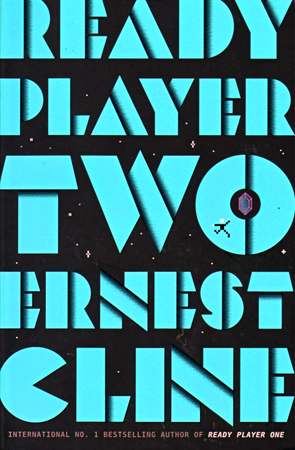

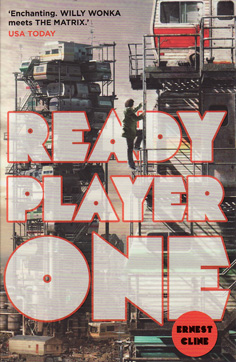
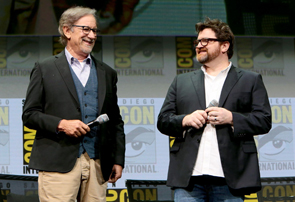
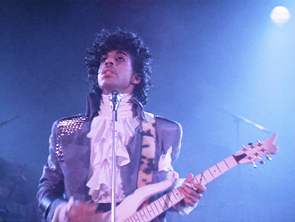

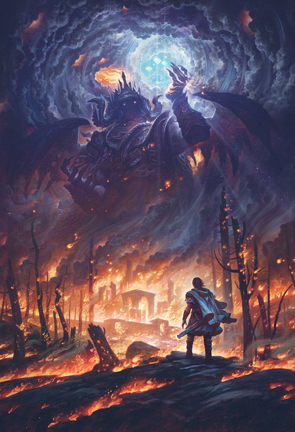

No one has commented yet. Be the first!